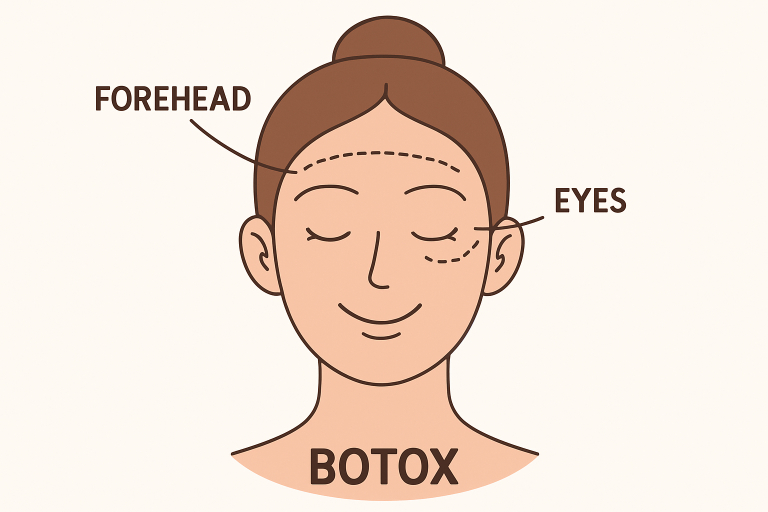Botox has become synonymous with anti-aging and facial aesthetics, yet there are countless myths and misunderstandings surrounding this widely used treatment. Despite its popularity, misconceptions can cloud people’s judgment, making it crucial to get accurate information before opting for Botox.
For individuals seeking Botox Santa Fe, knowing the facts from fiction is an essential first step. Whether the goal is to reduce the appearance of wrinkles or address certain medical concerns, Botox remains a trusted option when administered by experienced professionals.
Understanding Botox
Botox is a purified neurotoxin, famously known for its ability to smooth dynamic wrinkles. It works by temporarily blocking the nerve signals that cause muscles to contract, helping to minimize the lines created by expressions such as frowning, squinting, or smiling. Beyond its cosmetic appeal, Botox is also used in the medical field to treat a variety of conditions such as chronic migraines, excessive sweating (hyperhidrosis), and certain muscle disorders.
This minimally invasive treatment is FDA-approved, and its versatility continues to expand as research uncovers additional therapeutic applications. The effects are not permanent, which allows many users to customize their approach while minimizing long-term risk.

Common Myths and Facts
Myth 1: Botox Results in a Frozen Face
A common misconception is that Botox will leave you looking stiff or void of emotion. In reality, natural results depend largely on the artistry and skill of the injector. Experienced professionals carefully analyze facial dynamics and target only specific muscles to maintain a person’s genuine expressions while reducing unwanted wrinkles. When done correctly, Botox allows for a rejuvenated yet natural appearance.
Myth 2: Botox Is Unsafe
Many people are understandably concerned about the biological origins of Botox, given that it’s derived from a bacterial toxin. However, according to the Mayo Clinic, the purified toxin used in medical and cosmetic treatments is rigorously controlled and approved by the FDA, making it safe when used appropriately.
It also happens to be one of the most thoroughly researched cosmetic procedures, with decades of data supporting its safety and efficacy across both aesthetic and medical applications. Most side effects, such as temporary redness or bruising at the injection site, are mild and short‑lived.
Myth 3: Botox Is Only for Older Adults
There is a growing trend of younger individuals seeking Botox as a preventative measure. Many professionals recommend starting treatments as early as the late 20s or early 30s, as this approach can help delay the formation of deeper-set wrinkles. Preventative use does not mean excessive use; rather, it involves subtle, strategic dosing to preserve youthful skin for a more extended period.
Myth 4: Botox Is Addictive
Unlike substances that induce dependency, Botox does not cause physical addiction. Patients can stop the treatment at any point without experiencing withdrawal symptoms or adverse reactions, aside from the gradual return of natural facial lines.
As explained in the Cleveland Clinic’s guide on Botox and dermal fillers, the temporary nature of each session, which typically lasts 3 to 4 months, grants individuals the flexibility to reassess their treatment preferences over time, free of pressure or compulsive need.
What to Expect During Treatment
For those new to Botox or curious about the process, understanding what happens during treatment can ease anxiety and help set realistic expectations. A typical session unfolds as follows:
- Consultation: The journey begins with a personalized consultation, during which goals, underlying health issues, and any concerns are discussed.
- Preparation: The area to be treated is thoroughly cleansed, and if necessary, a numbing agent is applied to minimize any discomfort.
- Injection: Using an ultra-fine needle, the provider administers precise doses of Botox into selected muscles. Most sessions last around 10 to 15 minutes, making it a convenient choice for those with busy schedules.
- Post-treatment: There is minimal downtime, and people typically resume their normal activities immediately. Noticeable results develop within 3 to 7 days after treatment, with smoother, younger-looking skin emerging gradually.
Potential Side Effects
While Botox is considered safe for most candidates, awareness of possible side effects is essential. Temporary bruising, swelling, or mild discomfort at the injection site are the most common issues and typically fade quickly.
On rare occasions, individuals may experience mild headaches or temporary drooping of the eyelid or eyebrow, which almost always resolves on its own within days or weeks. Transparent communication with your provider ensures you are aware of your risks and helps align expectations for your unique situation.
Conclusion
Botox remains a leading choice for individuals seeking to minimize signs of aging or address specific medical concerns. Debunking widespread myths and paying attention to the facts ensures that individuals can approach this treatment with clarity and confidence.
With the guidance of a qualified professional, individuals can enjoy the benefits of Botox in a safe and comfortable setting, taking an empowered step toward their aesthetic or wellness goals.
